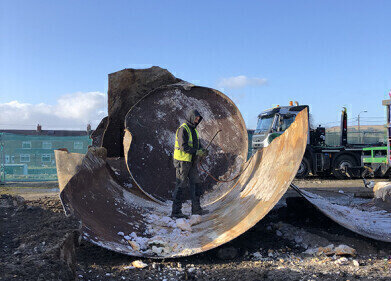Soil remediation
Is Agriculture to Blame for NOx Emissions?
Feb 23 2018
Nitrogen oxides (NOx) are a harmful contaminant that, at high concentrations, can cause a wide array of respiratory complaints, including asthma, emphysema and others. Until recently, it had been suspected that the majority of NOx emissions came either from industry or transportation – indeed, it was recently found that Chinese power plants emit as much NOx as all the passenger cars in the world.
However, a new study from California in the US has revealed that agriculture may play a bigger part in NOx emissions than previously believed. Published in the journal Science Advances, the paper analysed concentrations of NOx both in soil and in the air and concluded that the use of nitrogen-rich fertilizers could account for up to half of all NOx in the Californian atmosphere.
Forward-thinking measures held back by fertilisers
California would like to consider itself at the forefront of environmental practices in the USA. Targeting NOx emissions in particular, the California Air Resources Board introduced new regulations between 2005 and 2008, which succeeded in reduced NOx emissions in big cities by 9% year on year.
Despite their success, these measures only focused on reducing the pollution associated with transportation in urban centres like San Francisco, Sacramento and Los Angeles. Recognising that nitrogen fertilisers are making increasing contributions to NOx levels worldwide, and that California in particular is home to vast swathes of land dedicated to agriculture, ecologist Maya Almaraz decided to compile the first state-wide study of NOx levels caused by fertiliser.
Top-down and bottom-up
Almaraz’s team used a two-pronged approach to determine NOx levels in the Central Valley region of the state. First, they flew a specially-equipped plane over the San Joaquin Valley at the end of July and the beginning of August 2017, measuring NOx levels in the air as they went. Next, they used San Joaquin Valley data to simulate levels of NOx inside the soil itself across the region.
Finally, they cross-referenced these data with the amount of nitrogen fertiliser used on crops in the same area, using estimations based upon information from the Department of Agriculture and the various crop types grown in the Valley. The results showed that airborne concentrations of NOx corresponded almost exactly with the location of croplands, leading Almaraz and her team to surmise that fertilisers are responsible for anywhere between 20% and 51% of all Californian NOx.
Climate sensitive
The simulations showed that the amount of NOx emitted by the soil was directly dependent on two things – the concentration of nitrogen in the fertiliser, and the temperature in the region. Therefore, it is to be expected that as global warming continues and temperatures rise, the emissions of NOx from agricultural soil will also increase.
In order to avoid this outcome, it’s imperative that farmers employ best practices to limit the amount of nitrogen spillover in their fertiliser use. This can be achieved by tweaking the amount of fertiliser used in each growing stage, planting “cover crops” to capture excess nitrogen and enrich the soil, or by simply switching to organic fertilisers which don’t require nitrogen to function.
Events
Apr 15 2025 Moscow, Russia
Apr 21 2025 Shanghai, China
May 11 2025 Vienna, Austria
May 18 2025 Algiers, Algeria
23rd International Water Management Exhibition
May 20 2025 Prague, Czech Republic














